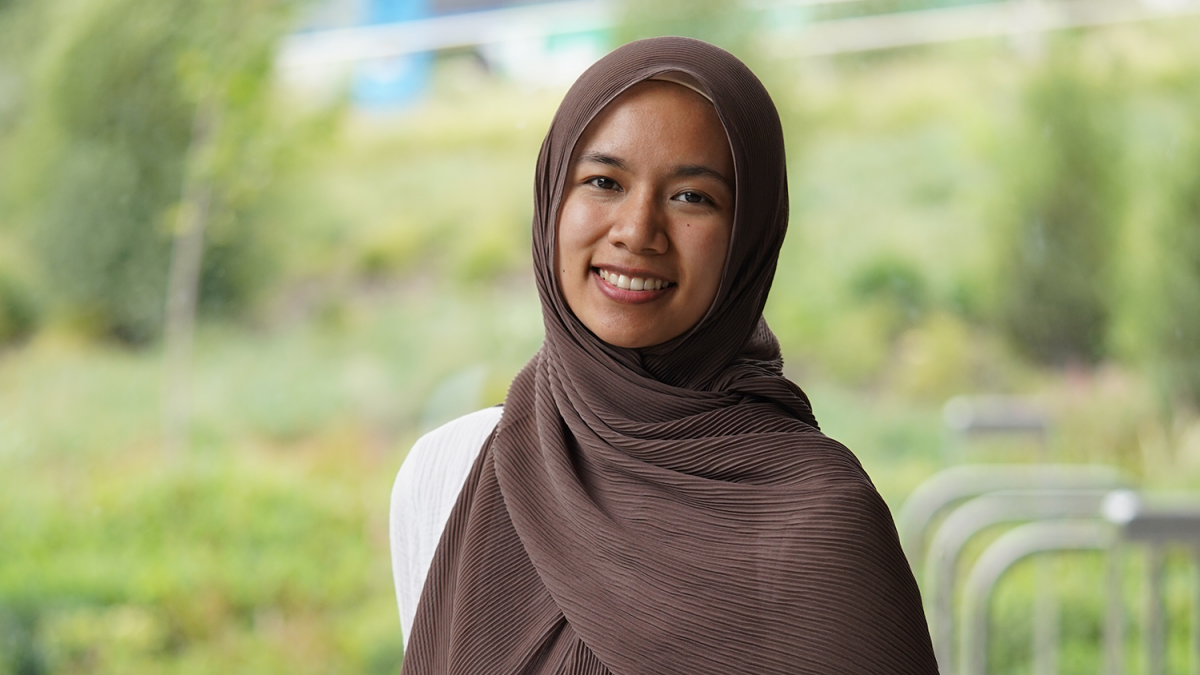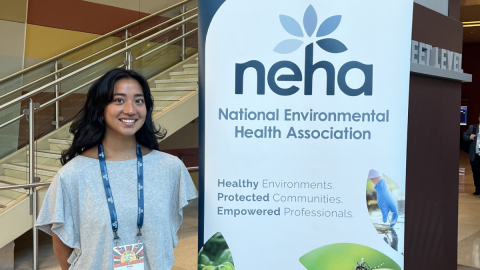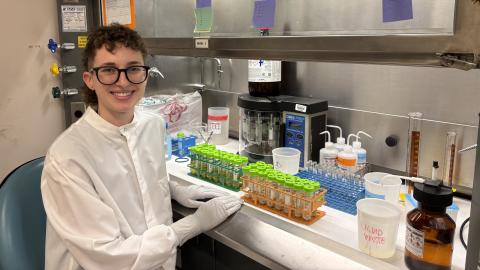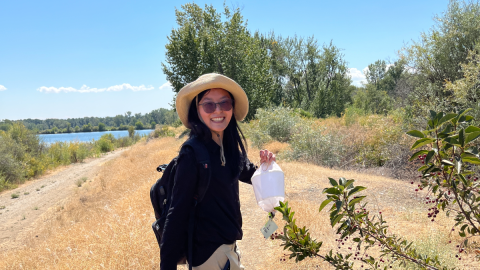Everetta Rasyid, a MS Applied student at the UW Department of Environmental & Occupational Health Sciences (DEOHS), recently spoke with us about her experience in the program and her summer internship with HP. Learn more about our Applied MS programs in Environmental Health Sciences, which you can complete in as little as 15 months.
Everetta Rasyid
MS Applied
Hometown
Seattle, WA
Future plans
A career as a regulatory toxicologist
“I was delighted to find an abundance of faculty members with research interests that aligned with my own, so the program felt like the perfect fit.”
- Everetta Rasyid
What motivated you to apply for the MS Applied program at DEOHS?
I became exposed to the field of environmental health while completing my undergraduate thesis for my BS in oceanography. I was focused on understanding marine microbes through dissolved metabolites, including algal toxins produced by cyanobacteria. By further exploring the linkages between environmental and human health, I grew interested in how I could pursue a career within the field despite having minimal credentials.
The MS Applied program at DEOHS sounded like the perfect way for me to improve my academic understanding of environmental toxicology while also utilizing internships to achieve valuable experience in the work field. Furthermore, I was delighted to find an abundance of faculty members with research interests that aligned with my own, so it felt like the perfect fit.
What have you enjoyed about the program so far?
I’ve thoroughly enjoyed being able to connect with faculty across various disciplines. Everyone is so passionate about their research, and it inspires me to pursue what most excites me.
What’s nice about the program is that you are given the flexibility to either take elective courses or register for an independent study with a faculty member of your choosing, as long as the study is mutually agreed-upon.
I took advantage of independent studies and was able to conduct data analytical research on a topic I was heavily interested in, gaining practice in data visualization that I wouldn’t otherwise obtain from core classes, all while gaining credit.
Where are you interning, and what is the focus of your internship?
I am currently a regulatory toxicology and chemical compliance intern at HP. My primary focus is managing and implementing the GreenScreen for Safer Chemicals tool to assess toxicological endpoints for a wide variety of substances under consideration or active use in HP’s inks and toners.
I assist with investigations and assessments necessary to support regulatory mitigation efforts and new product development. I also have the flexibility to connect with different HP employees across different disciplines, allowing me to take on additional projects that best align with my career development goals.
What’s a day in the life at your internship like?
My work is prioritized around GreenScreen requests for chemicals that are sent to our toxicology team for assessment. Secondary to this, I focus on other projects such as comparing chemical hazard classifications between different countries and managing corrective action plans to resolve chemical compliance audits.
I typically have meetings with my team members throughout the day but complementary to the internship. HP provides multiple classes and workshops for interns to participate in.
What have you learned from your internship?
Something valuable I learned throughout my internship that differed from my academic learning was how companies resolve toxicological issues in products from a complex business-model perspective.
How a company approaches a methodology via their corporate model is different for every company, but one universal takeaway I learned from this experience is that properly addressing user safety and health, environmental impact and hazard communication is essential for a business’s long-term success to avoid liability, meet regulatory compliance and overall produce a safer product.
What do you hope to do after graduation?
I hope to land a full-time position as a regulatory toxicologist, aiding businesses in toxicological research and hazard communication to comply with chemical regulations within products.
I’m also interested in enrolling in UW’s Green Chemistry & Chemical Stewardship Online Certificate Program to enhance my learning in supply chain decision-making and methods in comparative chemical hazard assessments.
Any tips for people applying to the MS Applied program?
Make connections and seek opportunities early! Though three quarters might seem like a long time to figure things out, it flies by quick.
Getting a head start in connecting with faculty, applying for teaching and research assistantships and internships, and seeking independent studies not only help ensure you gain valuable experience, but also give you the flexibility to experiment and seek out what you’re truly interested in. You might surprise yourself and find something that once excited you to not be all it’s cracked up to be, or something you never once considered to end up being what you’re most passionate about.




